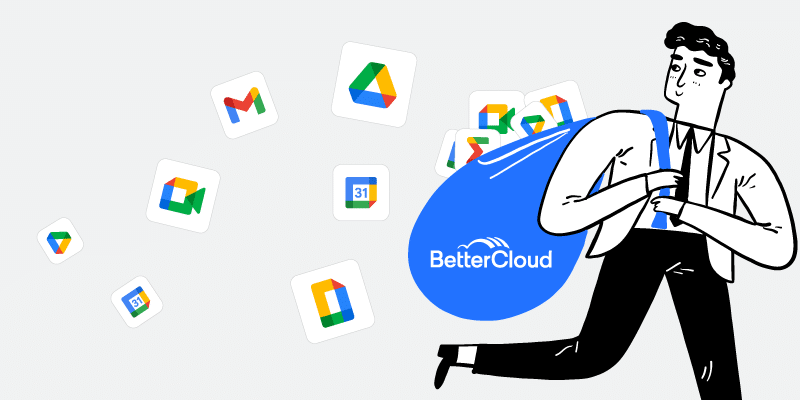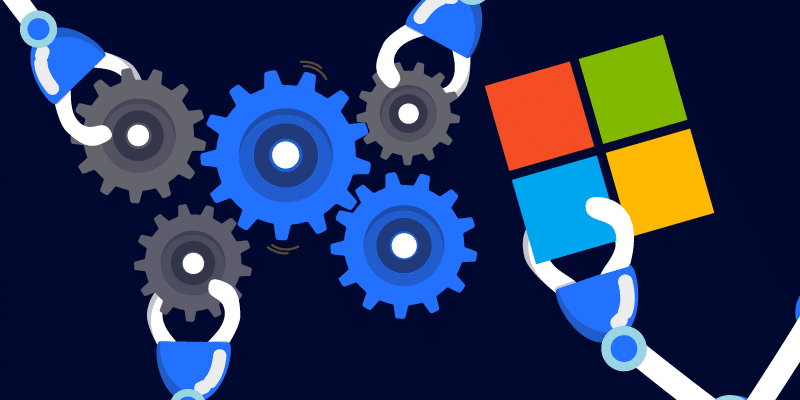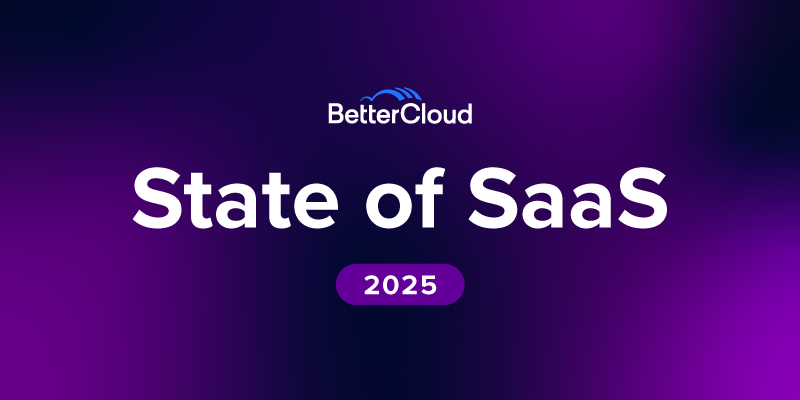The Secret to How Our Most Successful Customers Automate SaaSOps
April 22, 2020
8 minute read
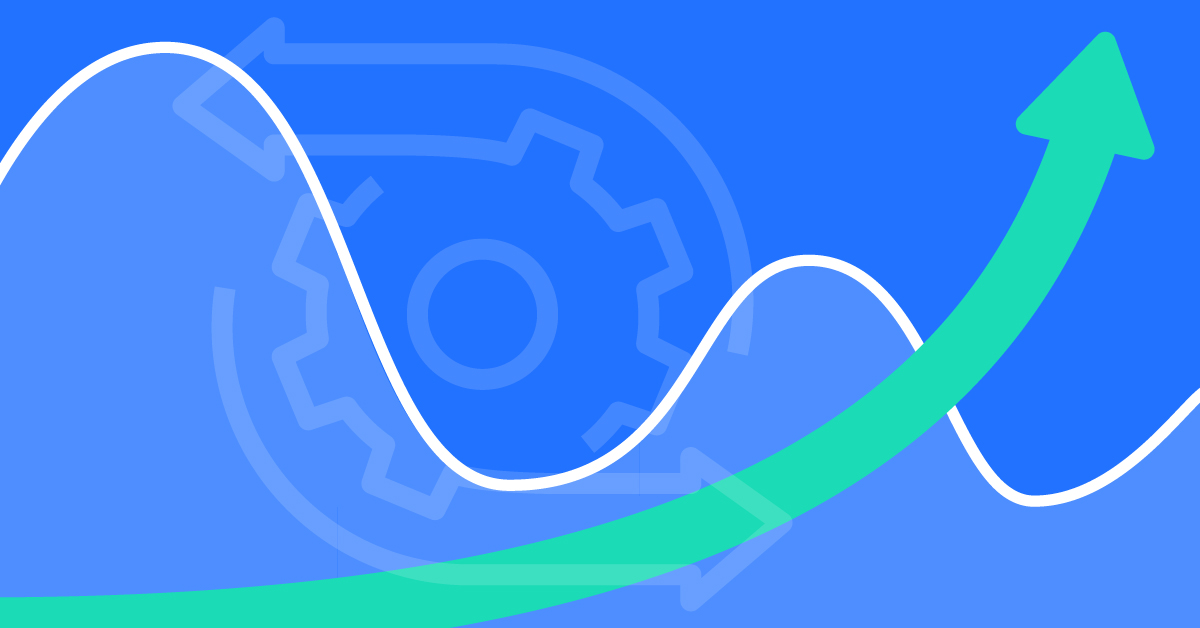
Every single day, thousands of mission-critical workflows are running on BetterCloud. It’s pretty amazing to know that thousands of customers trust us to manage and secure their digital workplaces.
But now more than ever, our customers are leaning on BetterCloud.
With layoffs and furloughs happening at an unprecedented rate, many of our customers are being asked to do more with less. They’re relying on our automation to get them through these times: enabling remote work, keeping employees productive, securing data effectively, and more.
I recently learned that over the last year, we’ve gone from running 2,000 multi-step workflows per day to almost 10,000 a day in our platform, which is huge.
It got me thinking about the power of automation in SaaSOps. Specifically, I thought about what our most successful customers have in common, what kind of value they’re getting from automation, how they’re getting value, and what makes them “SaaSOps Stars.” I wanted to share some of my reflections here.
This is what our most successful customers are doing
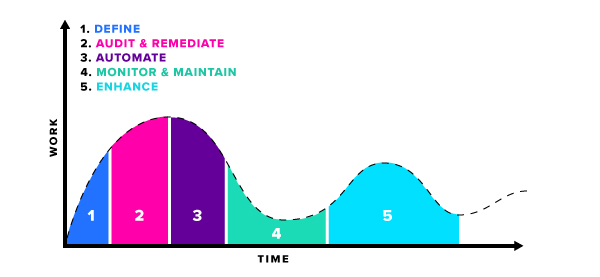
When I look at our most successful customers, I notice they all follow the same journey once they buy BetterCloud.
Note: How long this journey takes will be different for everyone. For some customers, they can breeze through the first part and set up their first workflow in 15 minutes. For others, it might take five months. It all depends on the size of your company, the complexity of your data, how much data you have, how many SaaS apps you use, etc.
Step 1: Define
To really do SaaSOps right, the first step is defining your SaaSOps policies. This is foundational. All of our best customers put a lot of thought into this step.
What are your rules around onboarding/offboarding, file sharing, lost devices, compliance, etc.?
What would a policy violation (and remediation) look like?
What do those processes look like, end to end, for your birthright apps? For your line of business apps?
Often, this means talking to other teams like security, legal, HR, and executive leadership to get their input and requirements.
Some customers have well-defined policies already. They’ll send us perfectly organized spreadsheets with 62-step offboarding checklists, outlining who’s responsible for each step, when it needs to be done, who the approvers are, etc.
Others don’t have any policies defined yet, and that’s okay. Where you are, what you have (or don’t have) in place, really depends on your company.
This step isn’t easy. But putting in this work upfront is key. Without it, you can’t reap the rewards of automation later.
Step 2: Audit & remediate
The work here increases. After they’ve defined their policies, our most successful customers spend time going through their environment. They run audits, review their apps, and get a sense of the current state of affairs. Usually, they’ll find policy violations that they need to discuss with other departments.
Once they find these violations, then they start using BetterCloud to remediate them. This might require setting up alerts and using Action Engine (our centralized repository of 250+ admin actions) to take one-off or bulk actions, etc.
For example, if BetterCloud detects too many super admins, they’re using the platform to revoke privileges. If they find publicly shared HR files containing SSNs in Dropbox, they’re changing the sharing settings.
Several customers have told me remediating something for the first time is a little scary because they’re taking action across multiple users, files, groups, or calendars. Even if it’s executed perfectly, they’ll wait to see if any end users ask, “Why did you do that?”
This step is very important. It’s only when customers have done this step a few times that they’re truly ready to automate.
Step 3: Automate
Automating your policies is the last big “chunk” of work you need upfront. This means building out your automated workflows (WHEN this happens, IF this is true, THEN take these actions), testing them, making sure they include all the remediation actions you need. But once you do that, the work just tapers off because everything is self-sustaining now. You’ve set it all in motion.
Automation is the inflection point. As soon as you start automating your SaaSOps processes, the value of BetterCloud just skyrockets. You’ll get more and more value (with less and less work).
“What I’ve really realized with BetterCloud is: The more you give it, the more you’re going to get out of it.” —Ed Ramon, Director of Information Technology at Fullscreen Media
Step 4: Monitor & maintain
Post-automation, your work here is very minimal. As your company evolves during the natural course of business (e.g., adding teams, opening new offices), there are workflows you’ll have to monitor and maintain.
You might want to tweak your workflows by improving them, adding steps, changing steps, or removing steps altogether.
But you’ve already done the hard part upfront. This stage is pretty easy.
Step 5: Enhance
Down the line, you’ll get comfortable with how your workflows are running. At this point, maybe you’re ready to use our Integration Center to add integrations with department-specific apps or line of business apps. Or maybe you’re ready to build your own custom integrations. Either way, these big enhancements to your policies will create some more work, but they’ll make your existing workflows even more powerful.
Once you start automating, the value is exponential
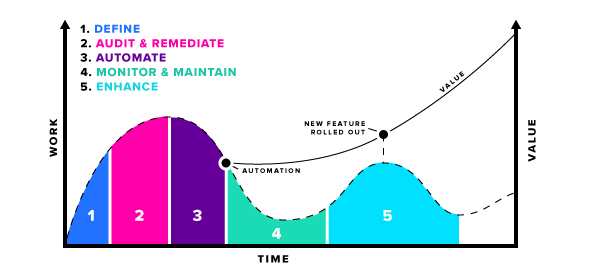
It’s not until you start automating that the value really takes off. It goes up and to the right, and it grows even more as you enhance those automations in BetterCloud.
What do you get from automation? Peace of mind. Not having to think about things like file security or offboarding anymore is extremely powerful. Plus, there’s much less human error and tedious work. You get to enjoy major productivity gains and time savings.
Two real-life examples: offboarding & file security

Using the same graph, here’s a real-life example of a customer journey for offboarding.
Our best customers are getting the most value out of BetterCloud by:
- Defining their offboarding process. What steps should occur (and when)? For whom?
- Auditing and remediating any gaps in their offboarding process. One example of a common gap is the need to create a templated auto-reply message for former employees, which our customers often do by collaborating with HR.
- Automating their entire offboarding workflows across multiple SaaS apps.
- Monitoring and maintaining offboarding workflows over time. This might mean tweaking them as their companies grow, go public, undergo M&A, have new compliance requirements, etc. For example, one popular step we’ve seen people add to their offboarding workflow is pushing their audit logs to Splunk.
- Enhancing offboarding workflows with new features.
One of our customers, Better, was able to replace their 110-step offboarding process with BetterCloud. Another customer, Excella Inc., took their on/offboarding down from 2-3 hours to 10 seconds across 17 applications.
How many hours of work would that save you a month? Would it save you headcount? Think of all the brain power and time you’d get back. What else could you do with that time? If someone was involuntarily terminated, and you knew they’d be automatically and immediately offboarded, how much would you value that peace of mind?
Check out our brand new Workflow Templates to see how we’re making automation even easier for our customers.
Similarly, for file security, the steps would look like:
- Defining your file security policy. Who can share what types of data? With whom? How “open” or “locked down” are your sharing policies?
- Auditing and remediating any files that violate your defined policies. For example, if files containing sensitive data are shared publicly, change the sharing settings to private.
- Automating your file security policy across multiple SaaS apps to enforce your policies and ensure data is being shared correctly. Here’s a workflow example: If sensitive files are shared publicly, change the sharing settings. Then send a message to the file owner informing them of the change and their policy violation. This is helpful for educating users and preventing further violations.
- Monitoring and maintaining file security workflows over time. Example: Add a step to your workflow to email your security team or send a message to the #security Slack channel.
- Enhancing file security workflows with new features (like Content Scanning for Dropbox, for example).
Rinse and repeat, but it’s a journey

Here’s how a “perfect” customer uses BetterCloud. Once they automate, say, offboarding, they sit back and enjoy the peace of mind and time savings. While that’s on cruise control, they turn their attention to other SaaSOps use cases. They’ll do the work and automation for onboarding. Then for file security. Then for insider threats (just as examples). Rinse and repeat. They’ll discover things in the product that will provide incremental value over time.
A lot of customers expect to do everything on day one. They think they’ll be ready to automate all of these use cases hours after purchasing BetterCloud. They won’t—this is a journey. It takes time to put in the work, think about SaaSOps, define your policies, assess your environment, figure out what to remediate, get input, build the right workflows, etc. For larger, older companies, it might even take a year or two. For smaller, more agile companies, it might be much faster.
But every time you set up an automated workflow, you’ll get more peace of mind. More work is taken off your plate. The value starts compounding. And you’ll be closer to reaching that digital workplace “promise land,” where everyone is happy and engaged because they’re working productively and securely.
Think about that value for one SaaS app. Now multiply that by all the apps in your environment, however many you use: 10, 20, 50. Now think about that value for multiple SaaSOps use cases: onboarding, offboarding, insider threats, app configuration, compliance, file security, etc.
That’s what I mean when I say BetterCloud’s value builds and compounds. The payoffs are additive, especially as you automate.
Take our customer FinancialForce, for example. They’ve built more than 292 workflows in their environment. In total, they’ve automated more than half a million actions related to user lifecycle management (ULM). They’re saving about 100 hours a month by automating manual tasks.
Here’s what it all looks like together:
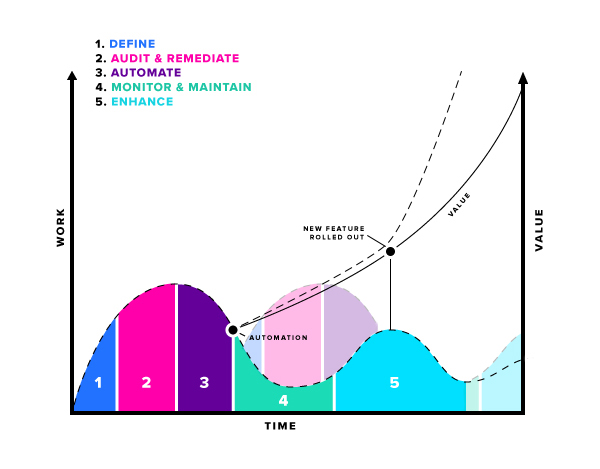
With each automated workflow (and time), the value compounds and skyrockets.
We have a team of experts (and an IT community) to help you
Again, I want to emphasize that some customers’ journeys might take minutes. Others might take months. It just depends on your company.
We’re here to support you along that journey. If you’ve read all of this and now you want to do something, we have a team of experts to help.
Our Expert Advisory Group (EAG) team provides one-on-one consulting services to help accelerate your BetterCloud deployment. They’ve helped hundreds of customers (just like you) set up tens of thousands of workflows. They understand this process better than anybody, and you can work together at a pace that makes sense for you.
“The customer service, the technical support, the [Expert Advisory] teams who come and actually help us build these automated workflows—that’s huge! It’s like having another team helping us.” —Shawn Carney, Director of Engineering, IT & Compliance at Etsy
Our teams really are the experts in the SaaSOps space. We have Okta Certified Professionals, Box Certified Professionals, and G Suite Certified Administrators. We have former BetterCloud customers, former IT admins, and people who’ve been at BetterCloud for 7 years. They know the product inside and out.
In the past year, the EAG team has been a game changer. When it comes to helping customers get value out of BetterCloud, they’ve made a massive difference. This team is a blend of all different backgrounds and types of expertise, and they’re the ones empowering our customers to get the most out of our product. In fact, we just introduced Workflow Templates, and we’re hosting weekly customer training workshops to help you optimize your BetterCloud experience.
To learn more about modern IT best practices, you can also join BetterIT, our Slack community. Over 4,000 IT professionals are in it. Many of the successful customers we mentioned here belong to BetterIT, and they regularly collaborate, share ideas, and learn about SaaSOps from each other.
If you want to get in touch with EAG, please email your customer success manager or success@bettercloud.com. We’ll be more than happy to help you unlock the power of SaaSOps automation.
Get inspired! To learn more about what our customers have achieved with SaaSOps, check out our eBook: SaaSOps Stars: 30+ Companies That Forever Changed SaaS Management & SaaS Security.



